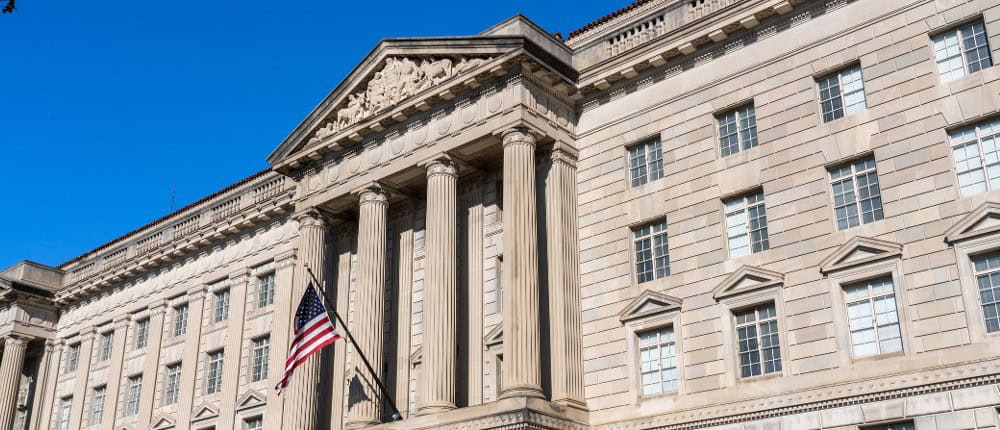Housing market trends.
Since the inception of the Credit Market Update publication, we have seen home prices reach a new peak quarter-after-quarter during one of the most precipitous housing booms in history. Sellers controlled the pricing power, and with demand substantially outweighing supply, they were able to maintain a firm chokehold for years. However, that trend has finally begun to reverse. Since 2021, mortgage rates have climbed rapidly and now hover near 7%, buyers appear to be at their breaking point regarding housing and mortgage costs. This resulted in the Case-Shiller 20 City Composite Home Price Index month-over-month growth to decline by 0.5%. The average single-family home reached its all-time peak in June 2022 of $318k and has been gradually declining each month since landing at $303k near the end of October. The previous decade had seen a constant increase of home prices, with only one month-over-month decrease occurring within that time frame. Eventually, buyers lost patience and exited the market forcing sellers to drop home prices to entice potential buyers back in. Mortgage rates are proving to be stubborn, causing a high barrier to entry in the housing market, particularly as it relates to first-time buyers. The ever-increasing housing prices looked to be a fantastical reality for sellers, but with prices becoming too high for the normal buyer coupled with exceptionally steep mortgage rates, it appears the seller’s music has come to an abrupt stop. The expectation is that this trend will continue to persist until prices reach a more realistic equilibrium, and until that happens, we should slowly see housing prices decline until that price point is discovered.
Companies prepare for expected economic downturn.
Most companies benefitted significantly during the recent bull market which left their balance sheets inflated. However, in the face of global inflationary pressures and rising interest rates, companies are now having to position themselves defensively against the potential effects of an economic downturn. The recent layoffs at Goldman Sachs, Amazon, and Salesforce are all indicative of companies attempting to be proactive in lowering their expenses in anticipation of lower profits. In addition, companies are likely to minimize significant purchases to protect their balance sheets, which would result in lower mergers and acquisitions (M&A) over the coming year. M&A activity declined slightly in 2022 after a blowout year of activity in 2021, and we expect it to fall further in 2023 as companies retain their available balances to cushion themselves against lower profits and unexpected economic pressures. Finally, we do not expect lower economic activity will result in an immediate wave of downgrades at the credit rating agencies as many companies maintain a significant cushion to weather a period of lower revenues without a material deterioration in their credit profiles.
Consumer spending may be poking the Fed’s bear.
Consumer balances are normalizing, which means increasing from artificially subdued levels seen in recent quarters. This is not a bad thing, but consumer behavior seems overly sanguine in light of the probable impending recession. In 4Q22, consumers continued to spend: household debt to GDP is approaching levels last sustained in 2009 and consumer loan balances – particularly nonrevolving loan balances (auto and student loans) – have continued to grow. In fact, a recent report by Edmunds shows that a record percentage (15%) of new car buyers in 4Q22 agreed to pay more than $1,000 for their monthly loan payment. This indicates domestic borrowers are comfortable with their indebtedness and their prospects. All of this seems reasonable, given the strong labor market. However, Fed data and bank management teams are pointing to elevated levels of credit card charge offs. Consumers are now in a precarious situation, with the potential for very real problems if the Fed takes a more hawkish action. As the Fed’s seeks to rein in inflation, robust consumer spending and widely available credit are certainly jeopardizing the potential for a soft landing.
Spreads tighter across the board. We expect investment grade issuance to remain subdued this year setting up the possibility of continued tightening.
Investment grade credit spreads have tightened since our last publication as issuance declined through the final quarter of the year and market conditions were less volatile. All industry sectors except for financials saw their spreads tighten with the total market as measured by the Barclays Aggregate tightened by 21 basis points. Corporate issuance has trended down since 2021, and we expect this trend to continue into 2023, which sets up a possible tightening scenario for corporate bonds this year. While the first two days of the year saw record issuance, we expect that corporates will be opportunistic when tapping the debt markets this year as rates remain high and the possibility of a recession looms in the second half. We have begun to see evidence that shareholder returns have peaked and net debt loads have begun to plateau, which signals to us that corporates are positioning for a decline in demand and economic activity. With a relatively low amount of debt maturing this year, and the potential for further economic deterioration, we expect that investment grade companies will stay on the sidelines with a greater focus on protecting their balance sheets than debt-fueled expansion or returns.
After years of rapid growth post-COVID, corporate earnings may have finally plateaued in early 2022.
2021 was an incredible year for corporations as earnings nearly doubled on the back of low interest rates and stimulus packages pumping billions of dollars into the economy. However, 2022 appears to be the end of the “free lunch” as both corporate earnings and shareholder returns have been in decline as the economy slows and many corporations are bracing for the possibility of a coming recession. A decline in both of these metrics are expected and natural, given the unprecedented growth in 2021 to mid-2022 in addition to headwinds in the current macroeconomic climate. The costs of labor, money, energy, and materials have all skyrocketed this past year as inflation raises costs and the Fed raises interest rates in response. Additionally, the manufacturing and services PMIs have both entered contraction territory in this most recent quarter for the first time since 2020, which is further indicative of economic slowdown as the Fed continues to wage its battle against inflation. While there is ongoing debate surrounding the severity and duration of this downturn, signs are increasingly pointing to a softer contraction than originally expected. Also, unlike COVID, fears of this coming downturn have been anticipated for quite some time, allowing companies to brace for impact by limiting shareholder returns in an effort to strengthen their balance sheet.



